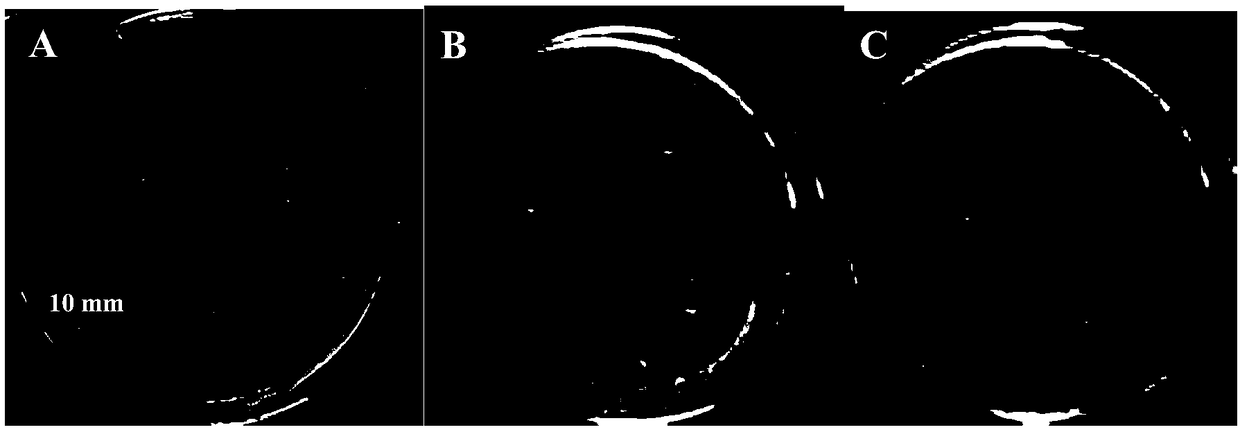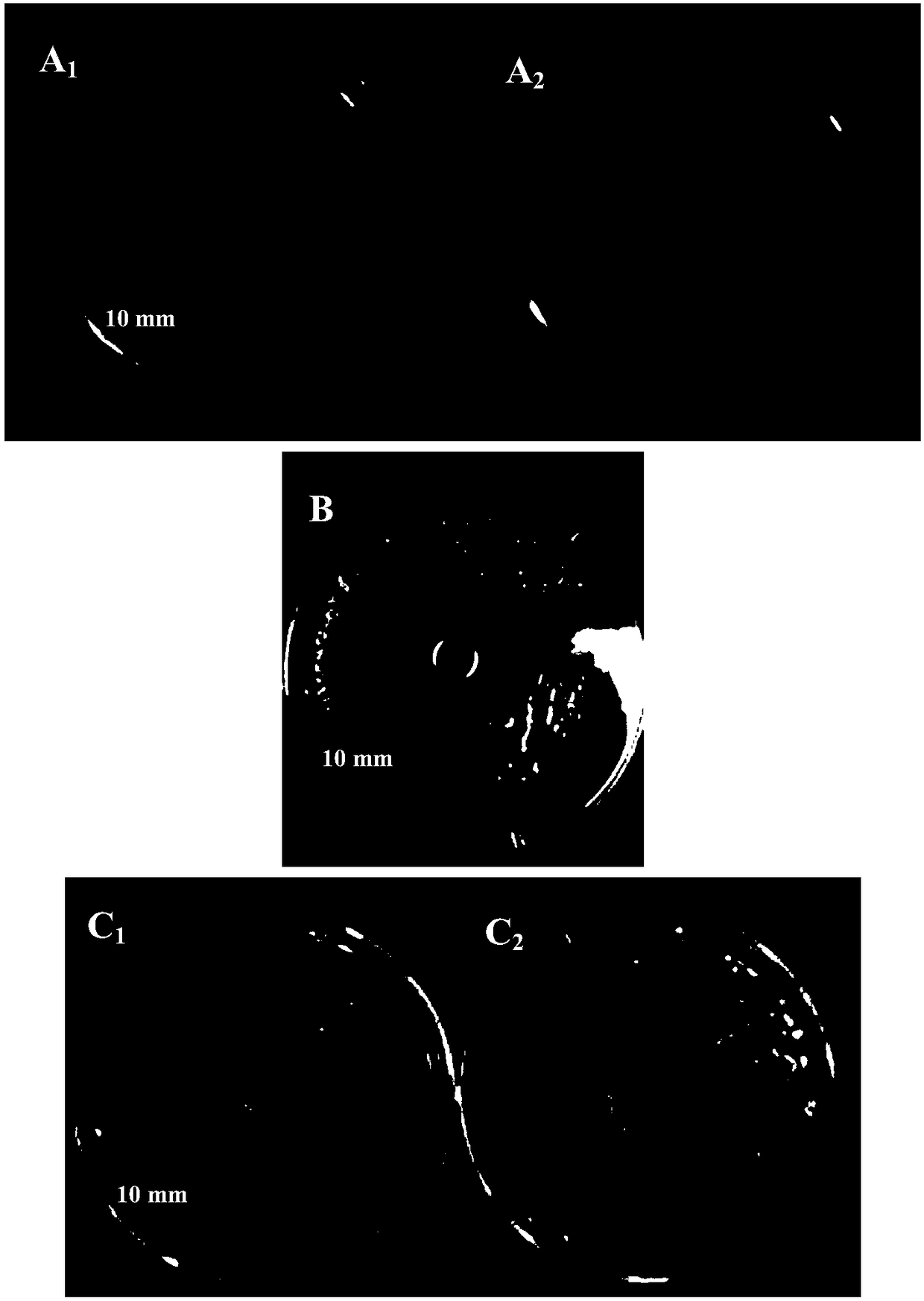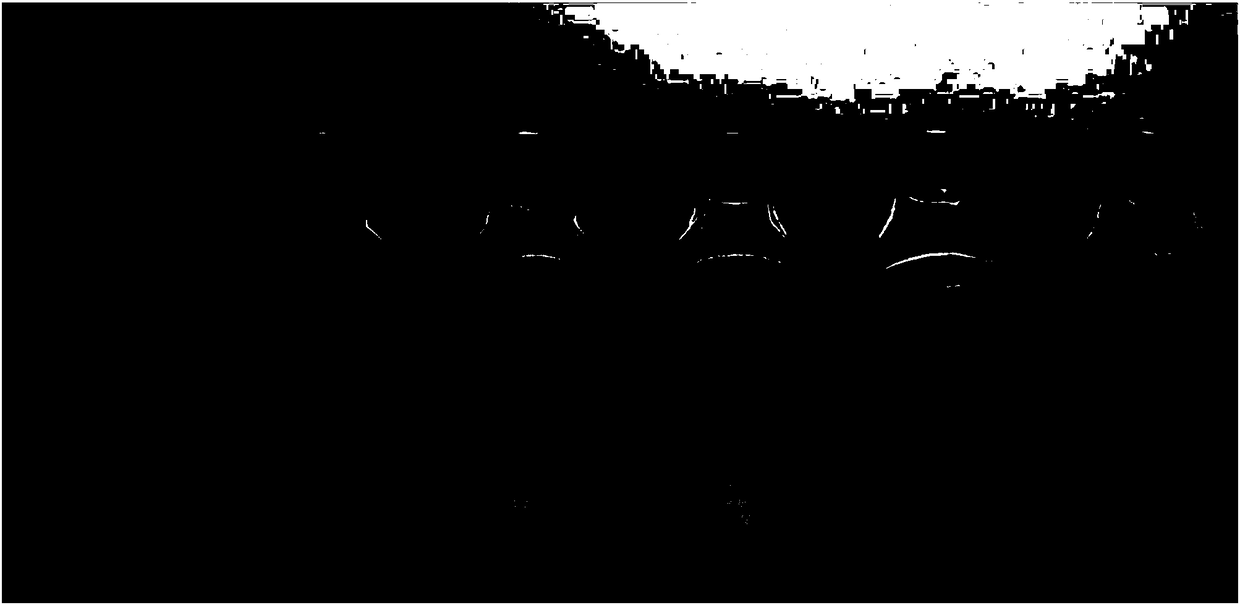Bacteriostatic agent for plant tissue culture and application of bacteriostatic agent in anoectochilus formosanus tissue culture
A plant tissue culture and bacteriostatic agent technology, applied in the direction of plant growth regulators, applications, fungicides, etc., can solve the problems of high cost of sterile seedlings, pollution, and high cost of tissue culture, etc., to improve the seedling rate , reduce pollution, and reduce production costs
- Summary
- Abstract
- Description
- Claims
- Application Information
AI Technical Summary
Problems solved by technology
Method used
Image
Examples
Embodiment 1
[0045] The preparation of embodiment 1 plant tissue culture antibacterial agent
[0046] 1. Preparation of plant extract:
[0047] (1) Get 40g garlic bulbs, 20g ginger rhizomes, 20g balsam pear peel and 20g pomegranate peel, after cleaning, add in 100ml of 95% ethanol, stir and pulverize to obtain a mixed solution;
[0048] (2) Ultrasonic treatment is performed on the above mixed solution. The temperature of ultrasonic treatment is 60°C, the frequency is 40KHz, and the time is 30min. After filtering to remove solid impurities, use a rotary evaporator to remove ethanol to obtain a concentrated solution, and use pure water to dilute the concentrated solution. Dilute to 100ml to obtain plant extract.
[0049] 2. Preparation of bacteriostatic agent for plant tissue culture:
[0050] Take 20ml of plant extract, 2g of chitosan oligosaccharide, 1ml of co-solvent tween20 and 60ml of pure water, put them into a 100ml volumetric flask, mix evenly, set the volume to 100ml with deionize...
Embodiment 2
[0075] The bacteriostatic property of embodiment 2 plant tissue culture bacteriostatic agent to bacterium and fungus
[0076] The plant tissue culture bacteriostatic agent that adopts embodiment 1 and comparative example 1~4 to prepare is to 3 strains of bacteria (pseudomonas, bacillus and water-dwelling Enterobacter) and 3 strains of fungi (alternaria fungus) in tissue culture pollution , Rhodotorula colloides and Penicillium) to study the antibacterial effect.
[0077] The specific content is as follows:
[0078] Bacterial inhibition test: Take an Oxford cup with a specification of Φ7.8mm×6mm×10mm (outer diameter×inner diameter×height), put it in 121°C for autoclaving, then dry and cool it for later use. Spread Bacillus, Pseudomonas and Enterobacter aquaticus on the surface of LB plate (diameter 90mm) in ultra-clean workbench, each plate contains 200μl concentration 10 6 CFU / ml of test bacteria. Put the Oxford cups on the surface of each plate, absorb 200 μl of the bacter...
Embodiment 3
[0087] Embodiment 3 Plant tissue culture uses bacteriostatic agent to the inhibitory effect of penicillium
[0088] Penicillium is smeared on the surface of clematis seedlings (tissue cultured seedlings obtained by tissue culture) in the ultra-clean workbench, and inoculated respectively in the culture medium containing or not containing the bacteriostatic agent for plant tissue culture prepared in Example 1 , placed at 25°C, lighted 12h / d, light intensity 2000lx and cultured for 3-5d.
[0089] Test results: if image 3 As shown, the contamination degree of tissue culture seedlings containing antibacterial agents was significantly lower.
PUM
| Property | Measurement | Unit |
|---|---|---|
| Diameter | aaaaa | aaaaa |
| Diameter | aaaaa | aaaaa |
| Diameter | aaaaa | aaaaa |
Abstract
Description
Claims
Application Information
 Login to View More
Login to View More - R&D
- Intellectual Property
- Life Sciences
- Materials
- Tech Scout
- Unparalleled Data Quality
- Higher Quality Content
- 60% Fewer Hallucinations
Browse by: Latest US Patents, China's latest patents, Technical Efficacy Thesaurus, Application Domain, Technology Topic, Popular Technical Reports.
© 2025 PatSnap. All rights reserved.Legal|Privacy policy|Modern Slavery Act Transparency Statement|Sitemap|About US| Contact US: help@patsnap.com



